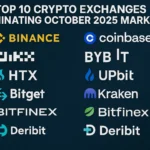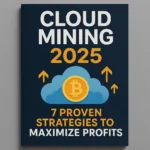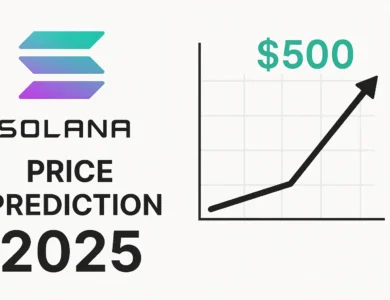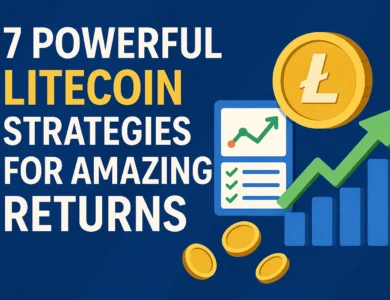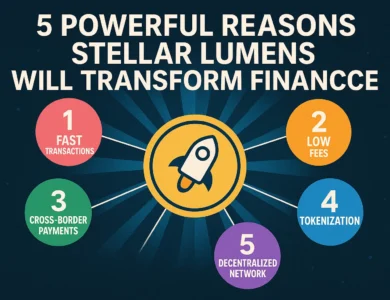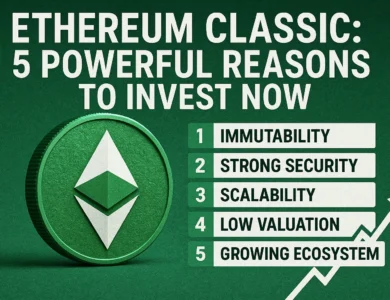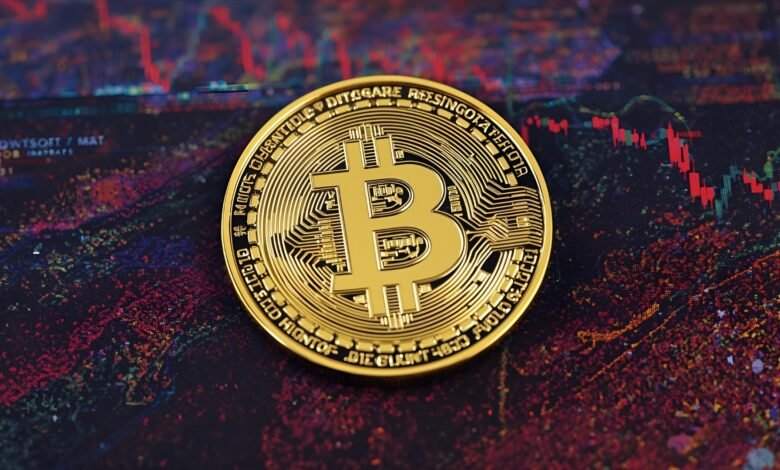
Over the past few years, the world of finance has accelerated toward a new frontier: utilizing blockchain to tokenize stocks. The pitch is alluring—24/7 trading, fractional ownership, near-instant settlement, and global access that traditional brokerages struggle to match. Startups, crypto exchanges, and even established financial institutions are scrambling to launch tokenized equities and other real-world assets (RWA). Yet beneath the buzz lies a more sober reality. The same technologies that promise efficiency can also magnify risks. As this crypto race to tokenize stocks intensifies, regulators are asking whether investor protection is keeping pace with innovation.
This article examines the appeal of tokenizing stocks, the inner workings of the market, emerging investor protection concerns, and the safeguards that can help the industry scale responsibly. We will also examine the evolving rules, typical failure points, and practical steps retail investors can take to navigate the opportunity without taking on hidden hazards. The goal is to create a balanced, human-readable guide that avoids hype while highlighting where the real value—and the real risk—lies.
What it actually means to tokenize a stock
At a basic level, tokenization is the process of representing an off-chain asset, such as a share of Apple or a fund unit, as a digital token on a blockchain. In most models, a regulated entity holds the underlying share, and the blockchain token acts as a digital wrapper that reflects rights to that share. When users trade the token, the platform updates the blockchain state while a custodian maintains the underlying position. In theory, this design combines the legal clarity of traditional markets with the programmability of smart contracts.
There are multiple architectures. Some platforms issue security tokens that map one-to-one to a single share. Others create depositary receipts or synthetic mirrors that track prices but do not grant corporate rights, such as voting or dividends, directly. Still others focus on fractionalization, which involves splitting a single share into multiple smaller units to improve accessibility. The choices matter because they determine what the investor truly owns and what recourse exists if things go wrong.
Why markets are racing to tokenize stocks
Four promises fuel the sprint. First, tokenization unlocks round-the-clock trading, free from the constraints of traditional exchange hours. Second, it enables fractional ownership, allowing small investors to buy a $10 slice of a high-priced stock. Third, it offers programmable settlement, which can reduce counterparty risk and shorten settlement cycles. Finally, it can expand global access, enabling compliant investors in different jurisdictions to participate in the same markets.

Institutions see another prize: operational efficiency. On-chain settlement can reduce reconciliation headaches and back-office costs, while composable finance lets tokenized assets interact with lending, collateral management, and automated market making. In short, the economics are persuasive—and that is why the crypto race to tokenize stocks will not slow down.
The core investor protection question: what do you actually own?
A deceptively simple question sits at the center of every tokenized stock offering: what exactly does the investor own? If the token represents a direct, beneficial interest in a specific share held at a licensed custodian, investor rights are easier to articulate. But if the token is a synthetic exposure or a contractual claim on a platform, investors may not have the same rights to dividends, voting, or corporate actions. They may instead hold a claim on the issuer itself.
This matters when stress hits. If a platform becomes insolvent or halts withdrawals, investors need clarity on whether their tokens are segregated assets or part of the general bankruptcy estate. Strong offerings disclose the legal structure, custody chain, and segregation rules upfront. Weaker offerings often bury or omit these details, leaving investors with counterparty risk that resembles unsecured credit more than equity ownership.
Regulatory landscape: same principles, new plumbing
Regulators approach tokenized stocks using familiar principles: investor protection, market integrity, and systemic stability. The difference is the plumbing—blockchains, smart contracts, and global platforms that operate across borders. In the United States, the Howey Test, broker-dealer rules, transfer agent requirements, and custody standards continue to apply if the token is considered a security. In the European Union, frameworks like MiCA interact with existing securities laws; in other jurisdictions, regulators adapt local regimes to accommodate security tokens and digital asset exchanges.
The result is a patchwork. Some regions green-light pilot programs and regulatory sandboxes. Others emphasize the need for strict licensing of exchanges, stablecoins, and custodians. Inconsistent rules complicate cross-border compliance, especially when a tokenized instrument can be bought in one time zone and redeemed in another. For investors, the safest path is to favor platforms that are transparent about their licenses, disclosures, and jurisdictional approach—and to avoid those that merely claim to be “compliant” without specifics.
Custody and settlement: where tokens meet the real world
With tokenized stocks, digital asset custody serves as the intersection between code and law. A top-tier custodian should segregate client assets, implement multi-party computation (MPC) or hardware security modules (HSMs), and maintain a robust incident response plan. But custody is only half the story. The other half is settlement finality—the moment when a token transfer is legally and operationally binding.
If the token settles instantly on-chain but the underlying stock moves on T+2 in the traditional market, the system must bridge the timing gap without introducing mismatch risk. Leading platforms document how they manage this timing, who bears which risks, and how they handle corporate actions, such as splits or dividends. Inferior setups gloss over these details, creating uncertainty about whether on-chain balances accurately reflect off-chain reality at any given moment.
Smart contract risk: code is powerful—and brittle
Smart contracts automate issuance, transfers, and compliance checks, but they can also fail. Bugs, oracle manipulation, or upgrade errors can freeze assets or distort prices. Responsible issuers publish audits, implement upgradable contracts with well-governed controls, maintain pause switches for emergencies, and disclose their admin key policies. Less careful projects skip audits or rely on unaudited forks, leaving investors exposed to silent exploits.
Investors should review the audit reports, verify whether the code is open source, and understand the process for approving upgrades. If a centralized party can unilaterally rewrite contract logic, the token’s risk profile more closely resembles a traditional database than a decentralized instrument. That may be acceptable—but only if it is disclosed.
Market integrity: wash trading, thin liquidity, and price discovery
Tokenized stocks often trade on niche venues with limited depth. Thin order books make price discovery fragile, opening the door to wash trading or manipulation. Because many platforms operate globally, surveillance rules and best-execution obligations can vary. Without robust controls and surveillance tooling, the market can drift from the underlying stock’s fair value, especially when compliance constraints gate arbitrage pathways.
A credible venue explains its market surveillance, lists the liquidity providers responsible for spreads, and discloses how it aligns token prices with the underlying instrument. It also documents how halts and circuit breakers work in volatile conditions. When these basics are missing, investors are effectively betting not just on a stock but on the platform’s market microstructure.
KYC/AML and sanctions: friction with purpose
The crypto industry has a long history of prioritizing frictionless entry. But tokenized stocks are subject to the same KYC/AML and sanctions rules as traditional securities. Platforms must verify identity, monitor transactions, and restrict access where required. While this adds friction, it helps prevent illicit finance and protects investors from the headline risk of trading in non-compliant markets.
Investors should expect clear onboarding flows, ongoing monitoring disclosures, and well-published jurisdictional exclusions. If a platform claims to offer global access with minimal checks, the short-term convenience can be overshadowed by long-term regulatory risk.
Disclosures and communications: the first line of defense
Transparent disclosures are the foundation of investor protection. Investors need to know whether the token confers voting rights, how dividends are distributed, whether withholding taxes apply, and which fees the platform charges for custody, trading, and redemption. They also need information about redemption timelines, force-majeure clauses, and what happens if the underlying asset cannot be delivered.
High-quality disclosures are written in plain language, not legalese. They include risk factors, spell out conflicts of interest, and offer examples of how edge cases are handled. Poor disclosures are vague, inconsistent, or silent on critical mechanics. In a market as young as tokenized equities, the difference between these two approaches can be the difference between a temporary inconvenience and a catastrophic loss.
Cybersecurity and operational resilience
Tokenized markets collapse at the speed of software. A compromised hot wallet, a DDoS attack on a matching engine, or a bug in withdrawal logic can cascade into liquidity stress. Serious platforms prioritize operational resilience: they maintain real incident playbooks, have tested backups, conduct simulated failovers, and provide clear status pages. They enroll in bug bounty programs and publish post-mortems when issues occur.

Retail investors can gauge the seriousness of a company by looking for SOC 2 or equivalent attestations, penetration testing summaries, and information about key management and access controls. While certifications are not perfect, they indicate whether security is treated as a box-checking exercise or as a core competency.
Insurance, guarantees, and the limits of comfort
Many platforms market insurance or “guarantees,” but investors must understand what is actually covered. Policies may protect against theft from specific wallets but exclude losses due to insolvency or market fluctuations. Some “insurance” is simply a self-funded reserve. Clear offerings explain the carrier, coverage limits, exclusions, and claims process. Vague promises can lull investors into underestimating risk, especially when they conflate asset protection with principal guarantees that do not exist.
Data privacy and the chain’s permanent memory
Trading tokenized stocks creates a persistent on-chain footprint. Even when addresses are pseudonymous, chain analytics can link activity to identities. Platforms must explain what is written to the chain, what remains off-chain, and how user data is stored and shared. Compliance with GDPR, CCPA, and similar regimes intersects awkwardly with blockchains’ immutability. Thoughtful designs minimize data exposure while maintaining auditability and transparency.
Consumer recourse: complaints, disputes, and redress
Traditional brokers offer clear complaint channels, leverage industry ombudsman schemes, and abide by established dispute resolution frameworks. Tokenization platforms require similar pathways, including accessible support, documented timelines, and clear escalation routes. Because tokenized instruments straddle multiple jurisdictions, cross-border redress can be complex. That is precisely why platforms should publish governing law, venue for disputes, and how they handle chargebacks, errors, and failed redemptions.
The promise of programmable compliance
The same tools that introduce risk can also strengthen investor protection when used effectively. Programmable compliance enables the encoding of transfer restrictions directly into the token, preventing sales to ineligible wallets and automatically enforcing holding periods or jurisdictional blocks. On-chain attestations can verify that a wallet has completed KYC without disclosing private data. Event-driven smart contracts can automate dividend distribution and keep cap tables synchronized in near real time.
These capabilities reduce human error and create auditable trails. They also enable a future in which secondary markets for tokenized securities are both efficient and compliant by design, not by after-the-fact enforcement.
How investors can evaluate a tokenized stock platform
Investors do not need to be software engineers to perform basic due diligence. Start with the legal structure: does the token represent a beneficial interest in a specific security, or is it merely synthetic exposure? Identify the custodian and confirm asset segregation. Review licensing: Is the venue a regulated broker-dealer, ATS, or MTF as applicable? Read the disclosure documents—especially the sections on fees, redemptions, and risk factors.
From a technical standpoint, look for recent audit reports, clearly documented admin privileges, and a plan for handling contract upgrades. On the market side, examine liquidity, published market-making relationships, and mechanisms for keeping token prices aligned with the underlying stock. Finally, test the support channels: response times, status transparency, and a real incident history signal how a platform behaves under stress.
The institutional angle: interoperability and standards
Institutions want to avoid bespoke pipes for every asset and chain. That is pushing the industry toward interoperability standards, including common token formats, identity frameworks, and settlement messaging that bridges on-chain and off-chain systems. The emergence of permissioned networks for regulated assets—often with allowed participants and embedded compliance—may coexist with public blockchains that provide transparency and broad distribution.
The industry is also converging on oracles and price feeds that can withstand regulatory scrutiny, as well as chain analytics that help monitor market abuse. These standards are not academic. They define whether tokenized assets will be isolated novelties or fully integrated components of the capital markets.
The road to safer tokenization: principles that matter
A sustainable market for tokenized stocks is based on five key principles. First, clarity of rights: investors should know exactly what they own and how to enforce it. Second, segregated, audited custody with strong key management. Third, robust disclosures that are written in plain English and kept current. Fourth, market integrity is supported by surveillance, best-execution practices, and alignment between on-chain and off-chain settlement. Fifth, programmable compliance that bakes eligibility and transfer controls into the token itself.
When these principles are present, tokenization can deliver its promised benefits without sacrificing the investor protection that underpins trust in capital markets. When they are absent, speed becomes a liability rather than an asset.
Future outlook: convergence, not replacement
Tokenized stocks are not about displacing traditional market infrastructure so much as they are about converging with it. The likely end state is a hybrid world in which regulated entities issue and manage security tokens on interoperable rails, custodians secure the keys, and exchanges offer seamless access across asset classes. Retail investors get fractional access and faster settlement; institutions get cleaner operations and programmable workflows.
However, achieving this requires a resolute focus on investor protection. The most successful platforms will understand that compliance is not a bolt-on feature; it is the product. They will publish the diagrams that show how rights flow from the issuer to the token holder, how failures are contained, and how disputes are resolved. In doing so, they will convert today’s race into tomorrow’s resilient market.
Conclusion
The crypto race to tokenize stocks is real, and so are the stakes. Tokenization can expand access, cut costs, and accelerate settlement. It can also create new failure modes—opaque legal structures, fragile smart contracts, thin liquidity, and jurisdictional uncertainty—that test the limits of investor protection. The path forward is not to slow the technology but to mature it: precise rights, segregated custody, audited code, credible liquidity, and programmable compliance that enforces the rules automatically. Investors who demand these basics—and platforms that deliver them—will transform tokenized equities from a speculative experiment into a dependable pillar of modern finance.
FAQs
Q: What is the main difference between tokenized stocks and traditional shares?
Tokenized stocks are digital representations of equity recorded on a blockchain. Depending on structure, a token can represent a direct beneficial interest in a share held by a custodian or provide synthetic exposure that mirrors the price. Traditional shares are recorded in centralized registries and settle on legacy rails. The legal rights you receive—voting, dividends, and corporate action treatment—depend on how the token is designed and disclosed.
Q: Are tokenized stocks legal in my country?
Legality depends on jurisdiction and on the token’s design. In most places, if a token represents a security, it must follow securities laws, including licensing, KYC/AML, and disclosure requirements. Some regions support regulatory sandboxes or dedicated digital-asset regimes, while others require traditional registrations. Always check the platform’s licenses and published legal opinions, and verify whether you are eligible to invest.
Q: What risks are unique to tokenized equities?
Beyond normal market risk, tokenized equities introduce additional risks, including smart contract bugs, custody vulnerabilities, mismatches between on-chain and off-chain settlement, and liquidity gaps on smaller venues. There are also jurisdiction and counterparty risks if the legal structure is synthetic or poorly documented. Thorough disclosures, audits, and reputable custodians are essential mitigants.
Q: Do tokenized stocks pay dividends and allow voting?
Sometimes. Suppose the token confers a direct beneficial interest and the platform handles corporate actions correctly. In that case, dividends can be distributed to token holders, and voting can be supported through on-chain or off-chain processes. If exposure is synthetic, dividends may be simulated or not paid at all, and voting may be unavailable. Read the offering documents to confirm.
Q: How can I evaluate whether a platform protects investors?
Look for clear ownership rights, named custodians, and proof of asset segregation. Check for recent smart contract audits, transparent admin key policies, and documented incident response. Verify licenses, review fee schedules, and assess liquidity and market surveillance practices to ensure compliance. Favor venues that publish plain-English disclosures, show status transparency, and provide realistic support and redress pathways.
Also Read: 9 Best AI Crypto Coins in 2025: Top Tokens to Watch

